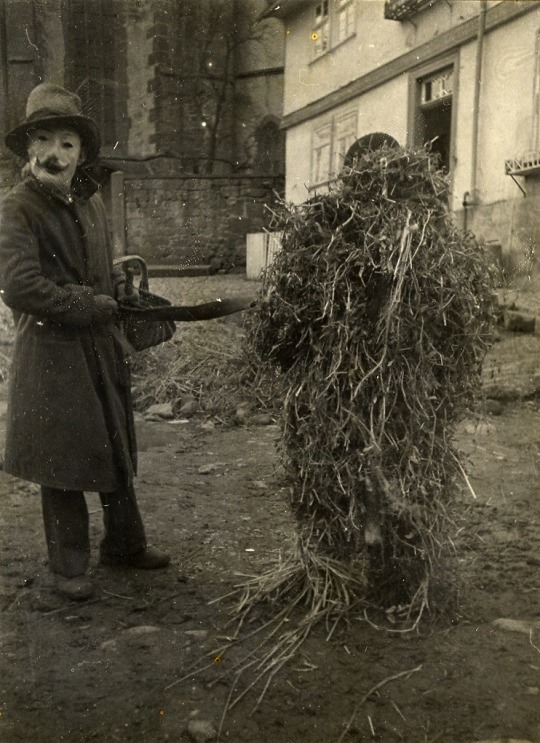Gri gri
Erbsenbär. In other towns the figure is also Strohbär. In Stausebach the pea straw was apparently used. On the left is a man who wears a mask. In the left arm he holds a stick and a basket. On a leash, he performs a straw figure (a wrapped straw person). The Strohbär - or here Erbsenbär - is a character from the carnival. The decline of the straw bear rite was due to the mechanization of agriculture.
Koryak girls wearing grass masks, Siberia, 1900
Caption: ”Zoe-Vlengs, or Preceptresses, of the Gri-Gri Bush in Official Costume [The Gri-Gri Bush is a cloistered institution for females where they receive instruction in all those things which fall into the sphere of womanhood. The bush is located in the forest in a secluded grove some little distance from the dwellings and farms. The grounds are carefully marked off, and are considered sacred. Men are strictly forbidden to enter the enclosure. An elderly woman, a sort of governess or preceptress, has charge of the girls who enter there between the ages of ten and twelve, where they remain for a number of years until the prescribed work is finished.]”
A hooden horse, Deal, Kent, England 1909.
| Luo Ugenya people, Nyanza region | ca. 1902 | ©Charles William Hobley
Stausebach, Kreis Marburg
Wangershausen, Kreis Frankenberg (Eder)
Baba Yaga ~ she was depicted as afierce, cruel, and penetrating witch who would wear down the insignificant with
her curt tongue. It is thought that Baba Yaga was a representation of the
grinding away of the soul through passive resistance. Baba Yaga was also
considered to be the life force present in the harvested grain, and in Russia
her representation was distorted into the old witch who lived deep in the
forest and ate children, which inspired the well known fairy tale Hansel and
Gretel. In old Hungarian folklore, Baba (“old woman”) was originally a
good fairy but was later degraded to a witch. A Baba Yaga is a hard bargainer,
and will threaten to eat those who do not fulfill their part of an agreement.










Commentaires